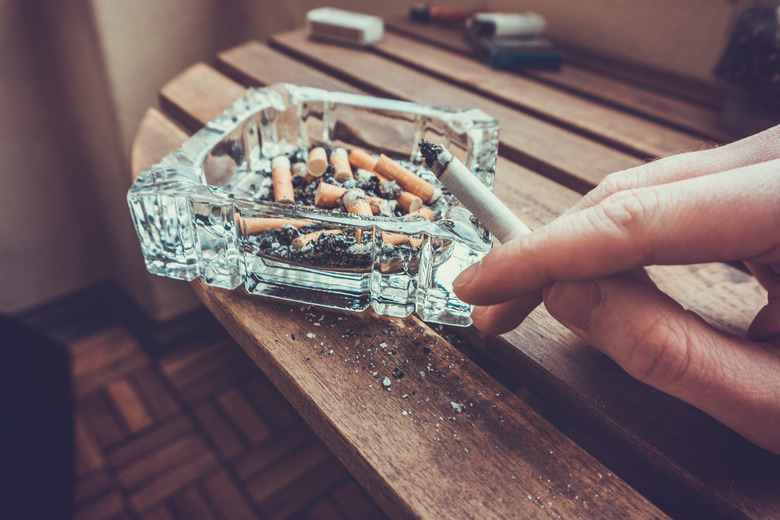Science Projects On Smoking
Despite the health risks linked to the tobacco and other additives inside them, approximately 43 million Americans smoke cigarettes. To learn more about smoking and its effects, you can conduct one of these science projects.
TL;DR (Too Long; Didn't Read)
Smoking cigarettes can leave traces and stains on clothing, teeth, and even organs. These three experiments test to see how and where cigarettes can affect people: how the smoke affects the lungs, how the smell sticks to clothing, and how parents smoking cigarettes can influence the development of an unborn baby.
Sponge Project
Sponge Project
To simulate the effects of smoking on the lungs, use a sponge, two jars, and a thin piece of 12 inch long tubing. First, cut the sponge in half and place one half in each of the two jars. Next, cut a hole in the top of each jar big enough for the tubing to fit through. In one of these tops, cut a second hole, big enough for the cigarette to fit through. Screw the lids onto the jars, then place one end of the tubing into each jar, through the holes. Finally, light one cigarette and place it through the remaining hole in one of the jar lids. Make sure the filter part of the cigarette is sitting on top of the lid. After the cigarette is finished burning, unscrew the lids from the jars and pull out the sponges to examine them. The smoke will have left them dirty, just like it would a human's lungs.
Smoker or Nonsmoker
Smoker or Nonsmoker
The sense of smell is often all that's needed to determine whether or not a person smokes. To perform this project, five people are required – three of these people must be smokers. Assign each person a number from 1 to 5, write it on a name tag and place it on their shirt. Then have each person walk into the room by themselves. Have students use their sense of smell to detect whether or not the person smells like cigarette smoke. Each student will then write the person's number on a piece of paper and write 'smoker' or 'nonsmoker' by that number. Once the first person leaves the room, another person will come in, and the process will repeat itself until all five people have come into the room, and each student has noted whether or not they think the person smokes. At the end, the five people will come back into the room as a group and reveal whether they smoke or not. Students will compare what they wrote down to the actual results.
Lima Bean Baby
Lima Bean Baby
To simulate the effects of smoking during pregnancy, a lima bean can represent an unborn baby. To begin this project, fill three cups with liquid: one cup with water, another cup with milk, and the last cup with tobacco water. (Tobacco water is made by emptying the inside of cigarette into a cup of water.) Place three lima beans into each cup. Daily, examine each lima bean and record any changes that can be seen. After 14 days have passed, determine whether the lima beans in tobacco water grew better or worse than the lima beans in the water or the milk.
Cite This Article
MLA
Lee, Stormy. "Science Projects On Smoking" sciencing.com, https://www.sciencing.com/science-projects-smoking-5770510/. 23 April 2018.
APA
Lee, Stormy. (2018, April 23). Science Projects On Smoking. sciencing.com. Retrieved from https://www.sciencing.com/science-projects-smoking-5770510/
Chicago
Lee, Stormy. Science Projects On Smoking last modified August 30, 2022. https://www.sciencing.com/science-projects-smoking-5770510/
